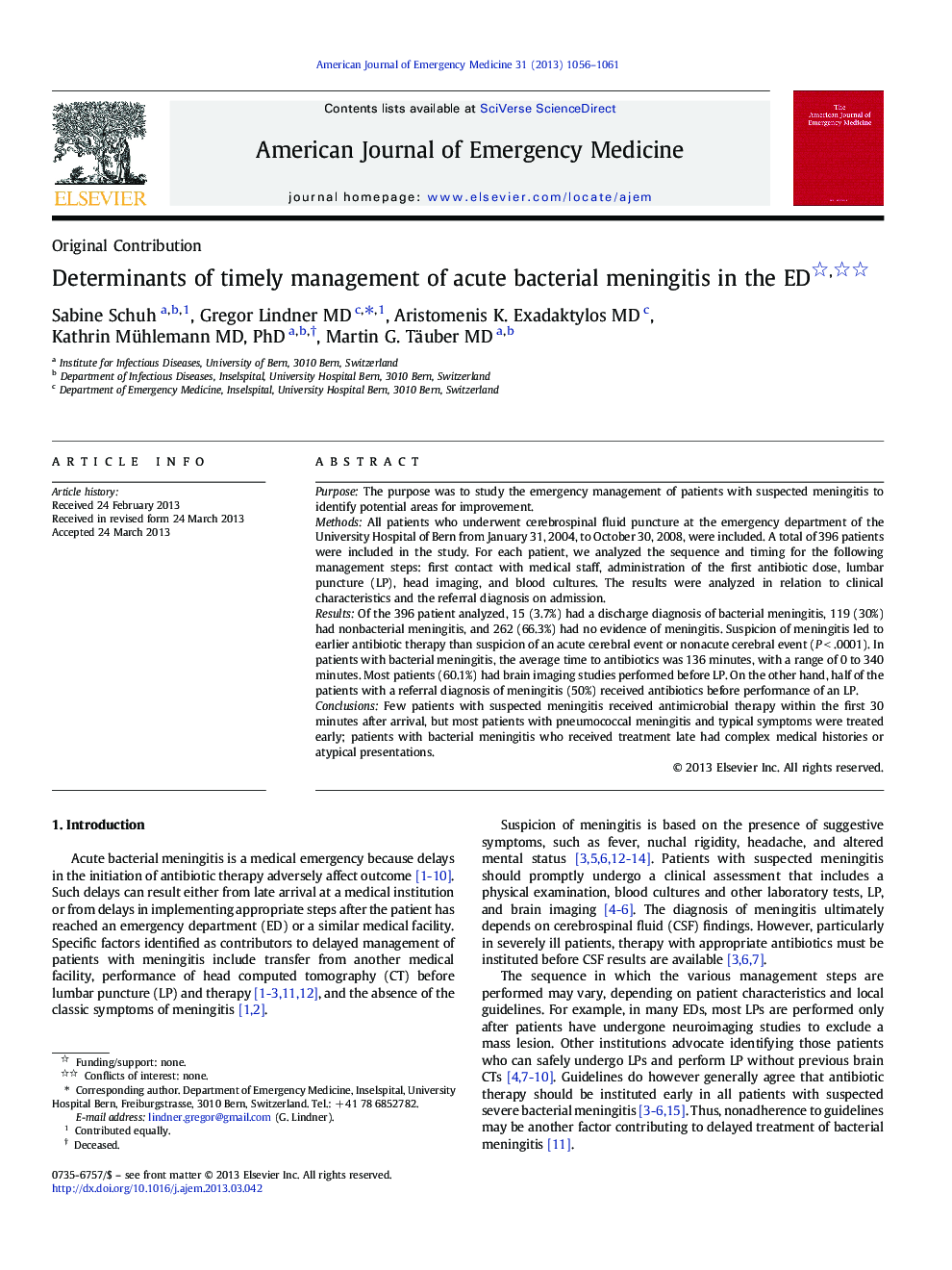| Article ID | Journal | Published Year | Pages | File Type |
|---|---|---|---|---|
| 3223474 | The American Journal of Emergency Medicine | 2013 | 6 Pages |
PurposeThe purpose was to study the emergency management of patients with suspected meningitis to identify potential areas for improvement.MethodsAll patients who underwent cerebrospinal fluid puncture at the emergency department of the University Hospital of Bern from January 31, 2004, to October 30, 2008, were included. A total of 396 patients were included in the study. For each patient, we analyzed the sequence and timing for the following management steps: first contact with medical staff, administration of the first antibiotic dose, lumbar puncture (LP), head imaging, and blood cultures. The results were analyzed in relation to clinical characteristics and the referral diagnosis on admission.ResultsOf the 396 patient analyzed, 15 (3.7%) had a discharge diagnosis of bacterial meningitis, 119 (30%) had nonbacterial meningitis, and 262 (66.3%) had no evidence of meningitis. Suspicion of meningitis led to earlier antibiotic therapy than suspicion of an acute cerebral event or nonacute cerebral event (P < .0001). In patients with bacterial meningitis, the average time to antibiotics was 136 minutes, with a range of 0 to 340 minutes. Most patients (60.1%) had brain imaging studies performed before LP. On the other hand, half of the patients with a referral diagnosis of meningitis (50%) received antibiotics before performance of an LP.ConclusionsFew patients with suspected meningitis received antimicrobial therapy within the first 30 minutes after arrival, but most patients with pneumococcal meningitis and typical symptoms were treated early; patients with bacterial meningitis who received treatment late had complex medical histories or atypical presentations.
